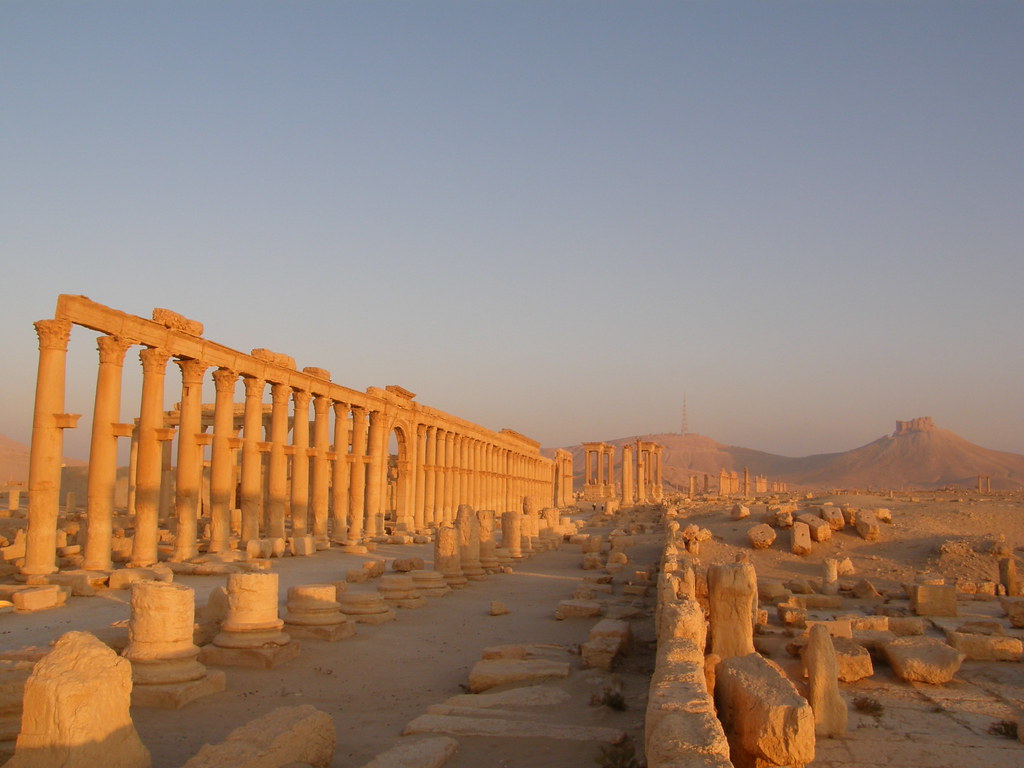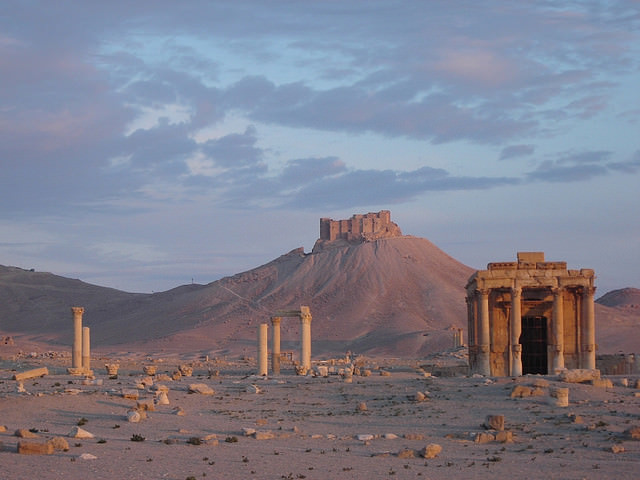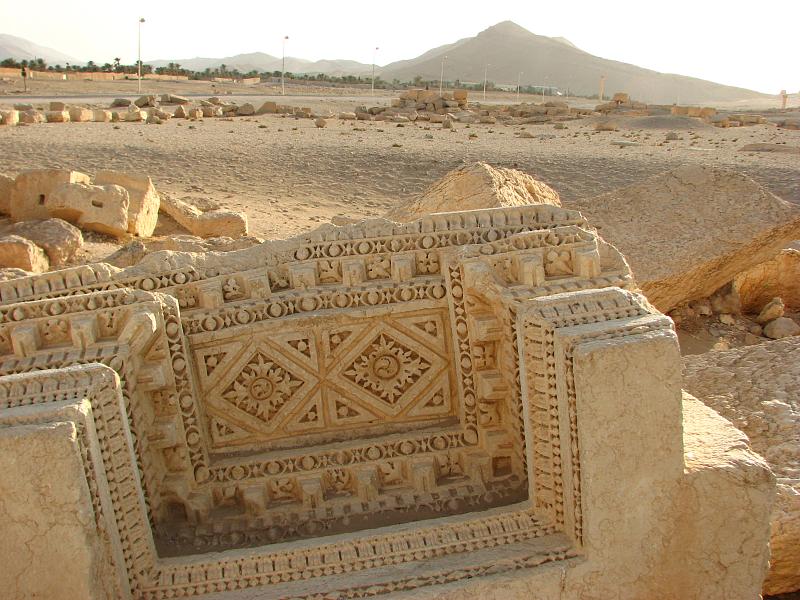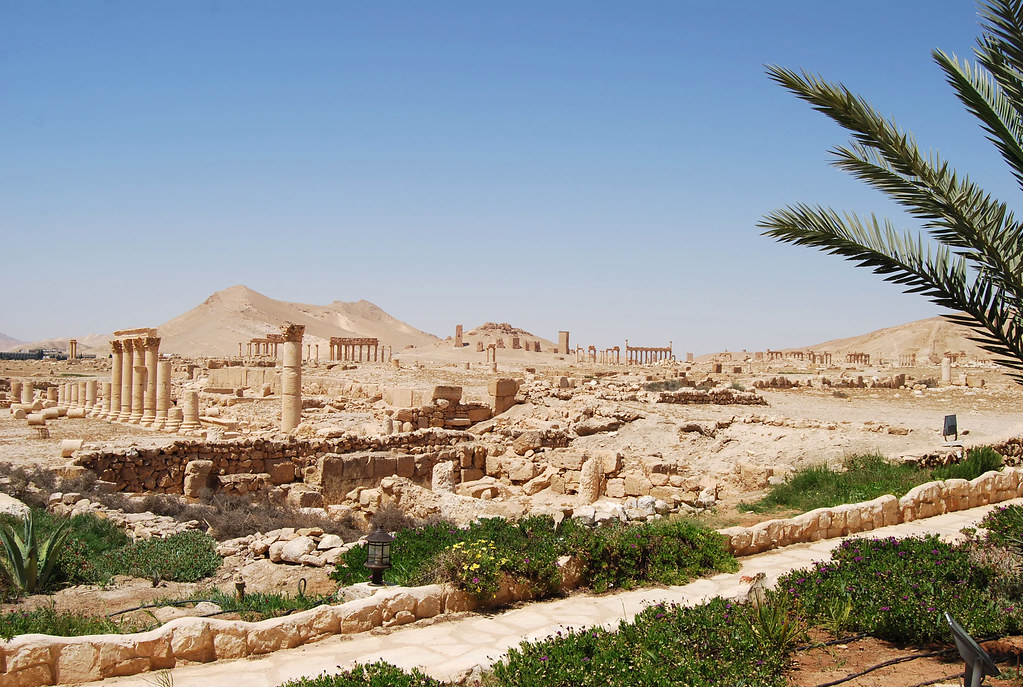Palmyra (also known as Tadmor) is mentioned frequently in the news, as the so-called Islamic State is advancing on this ancient gem of a ruined city in Syria. The formerly prosperous metropolis of Palmyra is a UNESCO World Heritage Site, with good reason. From 44 BCE to 272 CE, the city became a wealthy trade centre at the crossroads between Roman, Greek, and Persian cultures. Located in an oasis in the Syrian desert along key trade routes across the ancient world, it was an important hub for trade, and many caravans passed through this city, increasing its wealth. Its architecture and arts reflects this mix of styles and economic wealth.

Palmyrene Columns in the Desert by Filip Gierlinski / Flickr
The central axis of the city is marked by a grand colonnaded street over 1 km in length. Along its sides, secondary colonnaded streets linked the important sites, including the Temple of Baal, the agora, theatres, and other temples and urban districts. The Temple of Baal is seen as one of the world’s most important buildings of the 1st century CE.
Nowadays, many of these monuments can still be seen and visited. It is one of the most important ancient Roman sites in the world, and its unique style makes it even more valuable. The threat of ISIS to destroy this monument is horrible. After having already completely destroyed Hatra and Nimrud, we hope that their advance can be halted before they reach this important site.

Colonnade in Palmyra by Rafael Medina / Flickr (CC-BY-ND)

13th century Mamluk castle in the background, with ruins of the ancient city in the foreground, by Djordje Tomic / Flickr (CC-BY-NC)

Columns in the desert by -RS- / Flickr (CC-BY-NC-ND)

Panoramic view of Palmyra by Zeledi / Wikipedia (CC-BY-SA)

Mamluk Castle & Colonnades by jrwebbe / Flickr (CC-BY-NC-ND)

Detailed floral decorations by reibai / Flickr (CC-BY)

Roman Theatre of Palmyra by UltraView Admin / Flickr (CC-BY-SA)

View of Palmyra, Syria by Alessandra Kocman (CC-BY-NC-ND)
